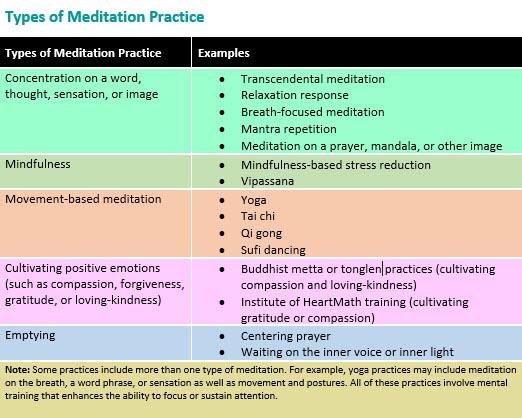In the bustling corridors of modern workplaces, where deadlines loom large and the clatter of keyboards echoes incessantly, stress has become an unwelcome yet familiar companion. As organizations grapple with the challenge of maintaining productivity while safeguarding employee well-being, a novel proposition has emerged from the shadows of boardrooms and wellness seminars alike: making meditation practices mandatory in high-stress work environments. This intriguing idea, which blends ancient wisdom with contemporary corporate culture, prompts us to explore the potential benefits and pitfalls of such a mandate. Could structured moments of mindfulness serve as a sanctuary for frazzled minds, or might they become another checkbox in the litany of workplace obligations? As we delve into this captivating discourse, we invite you to consider whether meditation could be the key to unlocking a more harmonious balance between work and wellness.
Exploring the Impact of Meditation on Workplace Stress
Incorporating meditation practices into the workplace has sparked a lively debate among employers and employees alike. Meditation has long been heralded for its ability to reduce stress, enhance focus, and promote a sense of well-being. Yet, the question remains: should it be a mandatory fixture in high-stress work environments? The benefits are enticing: reduced stress levels, increased productivity, and improved mental health. However, enforcing mandatory meditation could be seen as intrusive, potentially infringing on personal time and preferences.
- Stress Reduction: Regular meditation has been shown to decrease cortisol levels, leading to a calmer and more focused workforce.
- Improved Concentration: By training the mind to focus, employees may experience enhanced concentration and better decision-making skills.
- Enhanced Creativity: A relaxed mind often leads to greater creativity, allowing for innovative solutions to workplace challenges.
- Work-Life Balance: Providing time for meditation during work hours can contribute to a healthier work-life balance.
While the advantages are clear, it’s crucial to consider individual differences. What works wonders for one employee might not resonate with another. Thus, offering meditation as an option rather than a requirement could strike the perfect balance, encouraging those interested while respecting the autonomy of all employees.

Balancing Benefits and Challenges of Mandating Meditation
Incorporating meditation practices into high-stress work environments presents a double-edged sword of opportunities and obstacles. On one hand, the benefits of mandatory meditation are enticing. Research indicates that regular meditation can significantly reduce stress levels, enhance concentration, and foster a sense of calm and clarity among employees. By cultivating mindfulness, employees may become more productive, less prone to burnout, and better equipped to handle workplace challenges. Furthermore, fostering a culture that prioritizes mental well-being can improve overall job satisfaction and reduce turnover rates.
However, challenges arise when considering the imposition of such practices. Employees may view mandatory meditation as an infringement on personal time or autonomy, potentially leading to resistance or resentment. Additionally, the effectiveness of meditation can vary greatly among individuals, with some experiencing profound benefits and others finding it ineffective or even uncomfortable. Organizations must also consider the logistical aspects, such as the allocation of time and resources, and the potential need for professional guidance to ensure the practice is inclusive and beneficial for all.
- Pros: Reduced stress, increased productivity, enhanced mental well-being
- Cons: Possible resistance, varying effectiveness, logistical challenges
Strategies for Integrating Mindfulness into Daily Work Routines
In the fast-paced realm of high-stress work environments, seamlessly weaving mindfulness into daily routines can transform chaos into calm. Mindfulness practices, often perceived as an antidote to stress, can be subtly integrated into work schedules without demanding substantial time. Here are some strategies to foster a mindful workspace:
- Micro-Meditations: Encourage short, focused breathing exercises between tasks. These mini-breaks can rejuvenate mental clarity and enhance productivity.
- Mindful Meetings: Begin meetings with a brief moment of silence or a simple breathing exercise. This sets a calm tone, fostering more effective and engaged discussions.
- Dedicated Mindful Spaces: Create designated areas within the office where employees can retreat for a moment of peace. These spaces should be free from digital distractions, offering a sanctuary for reflection.
- Mindful Eating: Encourage employees to take their lunch breaks away from their desks. Focusing on the act of eating can transform a routine meal into a meditative experience.
By adopting these practices, workplaces can cultivate an atmosphere where mindfulness becomes a natural part of the daily rhythm, potentially reducing stress and enhancing overall well-being.

Expert Recommendations for Effective Implementation of Meditation Practices
Integrating meditation into high-stress work environments can yield significant benefits, but ensuring its effective implementation requires careful consideration. Experts suggest that the key lies in creating a supportive atmosphere that encourages participation without imposing it. Here are some recommendations to help facilitate this:
- Provide Flexible Options: Offer various meditation sessions throughout the day to accommodate different schedules and preferences. This flexibility allows employees to engage at their own pace, fostering a more genuine commitment.
- Educate and Inform: Conduct workshops or seminars to educate employees on the benefits of meditation, backed by scientific research. Understanding the potential positive impacts on mental health and productivity can motivate voluntary participation.
- Designate Peaceful Spaces: Create dedicated meditation areas within the workplace that are quiet and free from distractions. A serene environment can enhance the meditation experience, making it more appealing.
- Encourage Leadership Participation: When leaders actively participate in meditation practices, it sets a precedent and encourages others to follow suit. Leadership involvement can break down barriers and normalize the practice within the corporate culture.
By adopting these strategies, organizations can effectively integrate meditation practices, potentially transforming the work environment into a more balanced and stress-resilient space.








